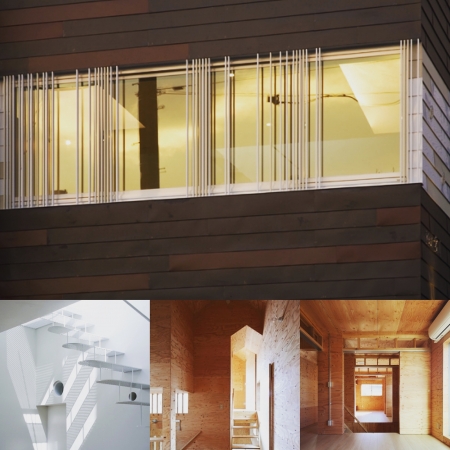透明性が高い建築
建築は人が入ることができる空間を内包するので表と裏の両方の見え方がある。いわゆる外観と内観だが、どちらが表か裏かは定かではなく、外観と内観の見え方の一致不一致もあり、外か内かの違い以上に様々な見え方が存在するが、それを表か裏かで考えてみようと思う。
表か裏かと思う時は真逆の面のつながりが確認できる時だろう。面がそのままつながっていれば、多少ねじれていたとしても表か裏かとは思わない。
真逆の面を持つのは建築の特徴のひとつだろう。真逆の面を持っていてもどちらかが見えなければ、表か裏かを意識することがない。それで言えば、どちらが表か裏かは人が見ている方が表で、その反対側が裏とした方が自然だろう。
表から裏の存在を意識する時はどういう時だろうか。外か内かを持ち込んで考えてみると、外から表を見る時に裏を意識する場合は内が見える時であり、内から表を見る時に裏を意識する場合は空間の形状がそのまま外観となっているかもしれないと意識する時だろう。
表も裏も意識できる建築を透明性が高いと考えても良いのではないだろうか。
"Highly transparent architecture"
Since architecture contains a space where people can enter, there are both front and back views. It is so-called appearance and introspection, but it is not clear which is the front or the back, and there is a mismatch between the appearance and the inside, and there are more various appearances than the difference between the outside and the inside, but it is the front or the back. I will think about it.
When you think it's front or back, it's time to confirm the connection on the opposite side. If the faces are connected as they are, even if they are twisted a little, I don't think they are front or back.
Having the opposite side is one of the characteristics of architecture. Even if you have the opposite side, if you can't see either side, you don't have to be aware of whether it is the front side or the back side. With that said, it would be more natural for people to see which is the front or the back, and the other side is the back.
What kind of time is it when you are aware of the existence from the front to the back? When you bring in the outside or the inside, when you are conscious of the back when you look at the front from the outside, it is when you can see the inside, and when you are conscious of the back when you look at the front from the inside, the shape of the space is the appearance as it is. It's time to realize that it may be.
It may be considered that architecture that can be conscious of both front and back is highly transparent.


